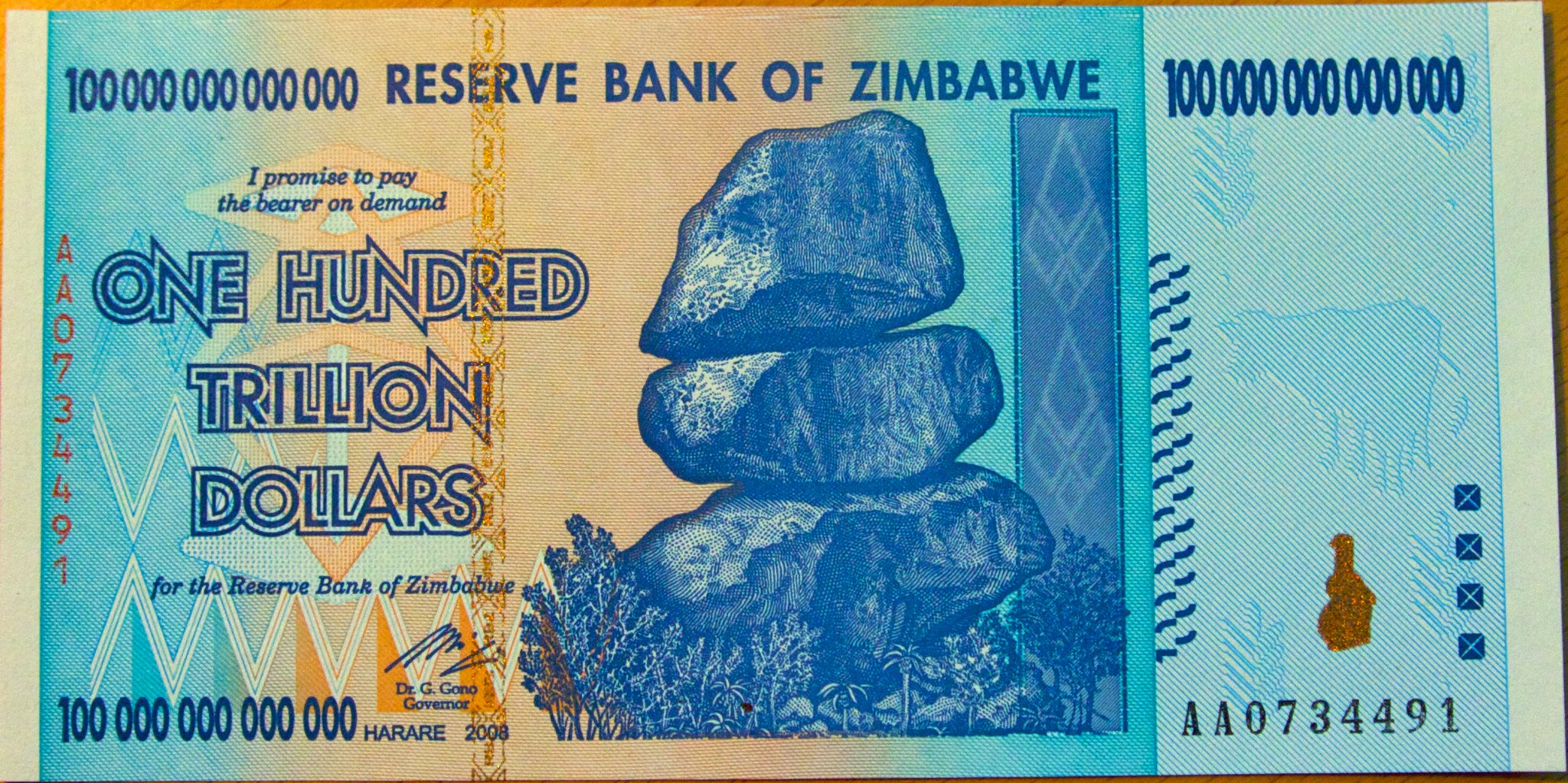Currency has always been more than just a medium of exchange. Some coins and bills reflect a nation’s culture, history, and creativity.
Here are some of the most unusual currencies ever produced, each telling a unique story about the country or era it represents.
Zimbabwe’s 100 Trillion Dollar Note
In the late 2000s, Zimbabwe experienced hyperinflation, leading to some of the highest-denominated banknotes in history.
The 100 trillion dollar note, introduced in 2008, became a symbol of the country’s economic crisis and skyrocketing inflation. Worth almost nothing at the time, it has since become a popular collectable item.
Today, Zimbabwe’s 100 trillion dollar bill is a reminder of the extreme impacts of inflation and a unique piece of financial history.
The Edible Currency of Germany
During Germany’s hyperinflation in the 1920s, a bakery in the town of Nördlingen issued bread currency. It was essentially edible money – loaves stamped with a monetary value.
Though it was meant as a temporary solution, this bread currency showed how innovative people can be in times of economic crisis. While it’s no longer in circulation, it remains one of the world’s most unique forms of currency.
Guitar-Shaped Coins of Somalia
In 2004, Somalia issued guitar-shaped coins to honor famous guitar designs. These unique coins were created in the shape of iconic guitars and became popular with collectors worldwide.
Made in limited editions, these guitar-shaped coins are both a tribute to musical history and an example of how currency can break from traditional shapes.
Canadian Glow-in-the-Dark Dinosaur Coins
Canada is known for producing some of the world’s most creative coins, and their glow-in-the-dark dinosaur series is a prime example.
Released by the Royal Canadian Mint, these coins feature dinosaur fossils that glow when the lights are off. This innovative design was an instant hit among collectors and demonstrates how modern technology can add flair to currency.
Palau’s Pearl Embedded Coins
The tiny Pacific island nation of Palau issued coins with real pearls embedded in them. These pearl coins celebrate Palau’s ocean heritage and highlight the importance of pearls to the island’s economy.
Each coin contains a small pearl, making it not only valuable for its rarity but also a symbol of Palau’s unique natural resources.
Looking for a job? Visit www.whatjobs.com today
Hiring? Post jobs for free with WhatJobs
Coins Made of Wood in the United States
During the Great Depression, some towns in the United States began issuing wooden currency. This form of emergency money was used in local economies to address the shortage of coins.
Today, these wooden coins are collector’s items, representing a creative solution to an economic crisis and an interesting chapter in American history.
Cook Islands $3 Coin
Most currencies come in standard denominations, but the Cook Islands broke that rule with their $3 coin. This unusual denomination reflects the island’s playful approach to currency.
Featuring various designs over the years, the $3 coin has become a quirky collectible and is a popular souvenir for visitors to the Cook Islands.
Further Reading
- The Role of Education in Career Advancement
- The Importance Of Continuing Education And Certifications
- The Role Of Personal Projects In Career Development
The Mongolian Coin That Plays Music
Mongolia issued a coin that actually plays a short musical tune when pressed. This innovative coin was created to honor the country’s musical heritage and quickly became a favorite among collectors.
The musical coin is an example of how currency can incorporate multimedia to celebrate cultural identity.
Switzerland’s Gold Bullion Coin
Switzerland holds the record for the world’s smallest gold bullion coin, issued in 2020. Weighing just half a gram, this coin features an engraving of Albert Einstein sticking out his tongue, a nod to the famous photograph.
With its tiny size and creative design, this coin stands as a testament to Switzerland’s mastery of precision.
Fiji’s Turtle Shell-Shaped Coin
Fiji is known for its wildlife-inspired currency, including a coin shaped like a turtle shell. This unique coin celebrates Fiji’s rich marine biodiversity and highlights the importance of turtles in Fijian culture.
The turtle shell coin has become a collector’s item and a symbol of the nation’s connection to its oceanic environment.
Need Career Advice? Get employment skills advice at all levels of your career
Japan’s 5 Yen Coin with a Hole
Japan’s 5 yen coin, with its iconic hole in the centre, is considered a symbol of good fortune in Japanese culture. The coin’s design includes rice stalks, water, and gear symbols, representing agriculture, fisheries, and industry.
Though common, the 5 yen coin is beloved for its symbolic meaning and practical design.
Celebrating Culture and Innovation Through Currency
From edible bread currency to glow-in-the-dark dinosaur coins, these unusual forms of money highlight the creativity and diversity of cultures around the world.
Currency doesn’t have to be just metal or paper—it can tell stories, represent heritage, and even spark joy among collectors and citizens alike. So next time you handle change, think about the unique history and possibilities behind each coin.




